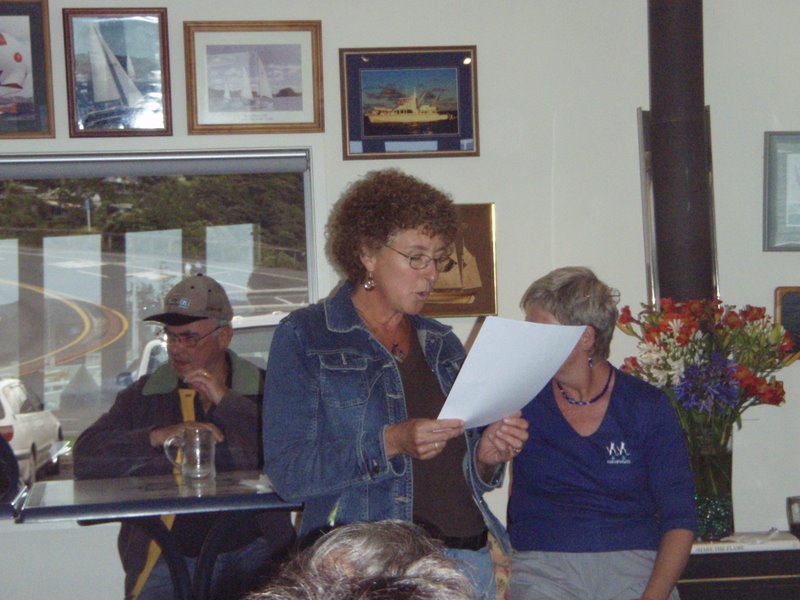From Mark:
I am writing this while Sabbatical III is berthed at the Opua Marina in Opua, New Zealand. At the time that we sent the previous blog entry giving our position after almost a day of sailing to Fiji, we also downloaded some weather information. The new GRIB weather files now showed an area of rapidly developing low pressure in the Tasman Sea that was predicted to move north and east across our route. This storm system was predicted to come with 40 knots of wind, much of it from unpleasant directions, high seas, and lots of rain. Conditions like this would not put us at great risk, but they would make for a few unpleasant days. We called Vera on the sat phone to discuss the new forecast, which they had also just seen. Michael suggested that deviating to the east should reduce the force of the weather system. The problem was that for the previous few hours the wind had moved a bit north and strengthened so that we could not sail our course and were going further west than we would like. The wind was supposed to be southeast, which would allow to sail east a bit, but it was ENE, which did not allow any easting. We were sailing as close to the wind as we could, which made the boat heel and brought waves over the bow. We were making very good time, however, and were already 160 miles out from Whangarei.
This all seemed very much like the trip from Tonga to New Zealand in November. That passage, with a run-in with an unexpected low pressure system, was the most difficult of our voyage so far and one we wished to avoid. So we talked it over and decided to turn around and head back to New Zealand. Vera considered doing so as well, but in the end they decided to continue on to Minerva Reef. They are better placed to get away from this system than us. They started out for Minerva, which is east of the direct passage to Fiji, so were further east when the new forecast arrived. In addition, as a Nautor Swan, a boat built for racing, Vera could sail faster and closer to the wind than Sabbatical III. We just spoke with them on the sat phone and they are making very good time. They expect to arrive at North Minerva about the same time as this weather sytem, so they need to push the boat. Once inside the reef they should be safe and able to rest.
Rather than return to Whangarei, we made for Opua, which is about 50 miles closer. We arrived this morning at 11 am and re-checked-in to New Zealand. We just looked at GRIB files going out 7 days and found that a second low pressure system, possibly even more intense than the one that induced us to turn back, will be following. So we will be in Opua for a least one week. The German weather guru Willifred is just one dock down from us so we have a good source of weather forecasting to turn to rather that just rely on the GRIB files.
The bright spot of this 40 hour passage into the South Pacific and back was the performance of the AIS (Automatic Identification System) receiver that I bought in the US and brought back in our luggage. It receives and translates messages send by transponders carried by all commercial ocean-going vessels above a minimum size. I have the AIS data stream fed into a laptop at the nav station. I also was able to get GPS, wind, and depth data converted from our Raymarine Seatalk network, which is proprietary, to the open NMEA standard and also got that fed into the laptop. Using Boatcruiser 2.0 software, I set an AIS alarm range and hooked up a cheap USB speaker in the cockpit to sound an alarm that is easily heard in high winds or with I-Pod headphones on. The test was the night sail up the east coast of the North Island on Thursday night. The AIS picked up vessels 30 miles away that were othewise invisible. For example, at about 10 pm the laptop beeped and flashed the approach from astern of Forum Fiji II, a cargo ship bound, as we were, for Lautoka, Fiji. Only 30 minutes later, it indicated that Pacific Alliance was approaching from dead ahead. The AIS system provides us with basic data from the GPS of the transmitting vessel. For example, the AIS provided our laptop with the name of the other vessel (Pacific Alliance), it length (800 feet!), its beam (138 feet wide), draft (45 feet deep), its type (oil tanker), destination (Whangerai), speed (17.4 knots), call sign, distance (25.8 miles), closest point of approach to Sabbatical III (less than 0.1 mile), time to closest point of approach (1 hour 8 minutes), rate of turn (0 degrees), course over ground, bearing, etc. We get to see the instruments of the Pacific Alliance on our boat since their AIS transponder transmits it to us. Our laptop combines the other vessel’s GPS data with our GPS data to compute closest point of appoach and time to closest point of approach. We often do not see another vessel with our eyes until they are 5 miles away and then it would take some time to figure out if they were heading towards us. With the AIS, we saw the Pacific Alliance coming right for us but we had over an hour to get out of the way. The AIS also showed the 380 foot cargo ship Forum Fiji II coming up behind us and to starboard. Knowing this, we turned a few degrees to port, thus getting out of the way of a supertanker but without crossing the path of a fast moving cargo ship. All this without either of the two ships being within eyeball or radar range. In the end, the tanker never deviated course (we saw them on AIS well before they ever noticed us) and we passed 3 miles apart.
M

Ray Roberts and his son Carl. Ray owns and operates the Riverside Drive Marina in Whangarei, where we kept our boat for the season.
.
From Laura:
We are back on dry land now after a brief foray into the open ocean. After a hectic week of preparation we felt ready to go to Fiji – and left on Thursday – just 8 days after arriving in New Zealand. The “perfect weather window” that everyone had been talking about here had many cruisers leaving the docks last week-end (around the 10th of May). There was a great forcast for sailers making the trip from New Zealand to either Fiji, New Caledonia or Vanuata . Even though we managed to get everything ready for our trip in an amazingly short amount of time, we really were just a day or two late in setting out from New Zealand in time to catch the optimal weather patterns. Just a day out to sea, we read (via downloaded weather maps and e-mails) that the system was changing rapidly and we could expect quite a lot of wind and rough seas for the week ahead of us. We just weren’t up to facing that and turned the boat around about 100 miles north of New Zealand and spent the night sailing back to safe harbor in Opua where we will await the next good weather window. Mark has written a bit about that already, so let me fill you in on what we did in our week in New Zealand to get ready for departure.
The main excitement was seeing old friends. We were happy to find our friends Michael and Britta from “Vera” in Whangarei with us . Although their boat was down the road from us in a different marina, it was easy to get together, although we both spent most of our days doing boat chores . We somehow managed to go out to dinner with them 4 times. We met a very nice couple whom we had briefly known in Tonga and who had become good friends with Vera over the winter – they are Beth and Ken – two Americans- on board their boat Eagles Wings. The six of us went out to dinner a couple of times. Beth and Ken have spent the past 3 years going back and forth between New Zealand and Tonga and are doing it again this year.
We had been anxiously awaiting our reunion with Risho Maru, the Austrian couple we befriended last year. They have been in New Zealand since we left – working on their boat and touring the country. It was almost a week after our arrival that we were able to see them – as their boat is in a marina about an hour drive north of ours – but on Monday they drove down to see us. It was a bittersweet reunion as they have decided to start heading home – and will not be going to the same places as we are. They just don’t have the time. They want to get their son Finn enrolled in a real school – rather than continuing with his “boat schooling” – and they are somewhat anxious to return to loved ones at home -after being away for 3 years already. It will still take them a year and a half to get back to Europe, but that means moving relatively quickly through the rest of the South Pacific and hopefully arriving in Thailand by November – a long distance away – and then the Med by May. They will not be going to Fiji with us as we had hoped. Right now they are on route to New Caledonia and then they will go to Vanuatu before heading west. We, on the other hand are going first to Fiji, and then to Vanuatu. It is not easy (from a sailing perspective) to go the opposite direction – otherwise we would seriously consider it. However, if things go right we will be able to meet them once again in Vanuatu for a short time before they leave – we certainly hope so. We are so very disappointed and sad to see them go…… I guess it is something we have to continue to get used to as we meet new people around the world.

Peter and Alexandra of Risho Maru

Mark and Finn on Sabbatical III
Provisioning took up a huge amount of time (and money!) – as we made several large shopping expeditions – filling the boat with canned goods, drinks, sweets, cheeses, meats, sugar, flour…. etc. etc. Luckily there are great grocery stores here – everything one could want is available – although the prices here are absurdly high especially with the bad exchange rate for U.S. dollars. My favorite store was “The Mad Butcher” – which is named quite appropriately. It is a huge, ice-cold shop that specializes in meat and they will package and deep-freeze it for you. We bought lots of stuff – lamb, chicken, beef – and loaded it into the freezer on the boat – it will be nice to have when we are in places like Vanuatu where I suspect the quality of meat will not be what it is here. Besides groceries we had a small list of other essentials that we had to pick up – new pillows, a couple of new towels – just minor things. The boat is really very well supplied now. We also bought beer and wine – more than we would ever drink in a lifetime at home – but very little compared to what other cruisers seem to keep on their boats, There are limits on how much alcohol you are supposed to bring into Fiji and all of us are breaking the rules – I think they allow 6 liters of wine in all which is pretty paltry when you consider that most boats will be hanging around for months. Anyways, we are all set in terms of food etc.
In addition to the boat provisioning there were several critical boat issues which needed to be attended to – all Mark’s domain – including installing a new VHF radio, an AIS system (see Mark’s blog), new sails, waterproofing seals on all external lockers, re-attaching back-stays, adjusting the new sails, removing a light fixture that was broken (this involved me taking Mark up the mast 4 times). The boat was also in desperate need of cleaning, but we only did the most basic cleaning as we were too busy to do more. I guess that is one thing I can take care of while we await a new weather window.
All of our encounters with the Kiwis this past week have been so pleasant. The shopkeepers here are friendly in a very different way than at home – they seem a little gruff – but invariably go out of their way to make sure you get what you want. Half the time I am not quite sure I have even understood what they have said, and I am sure they must have the same issues with our English. The accents are incredible. Carl is Cal, eighteen is eye-deen, bread is breed… it is a lot of fun.
More later……
L.
 Norsand Boatyard, Whangarei
Norsand Boatyard, Whangarei

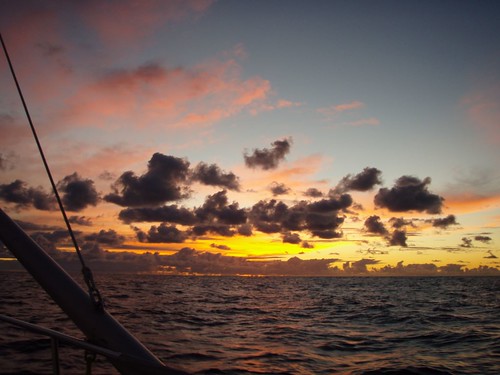
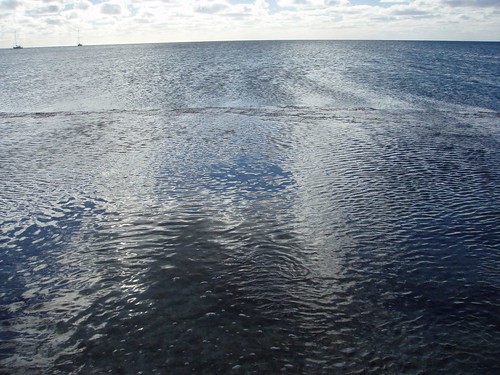
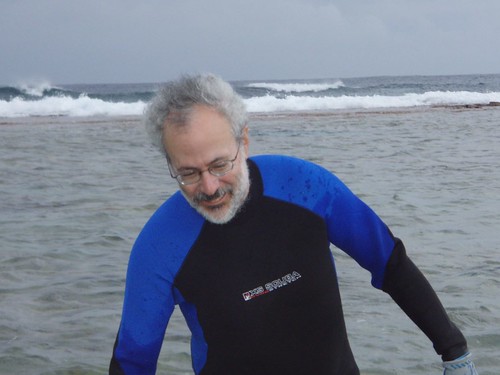

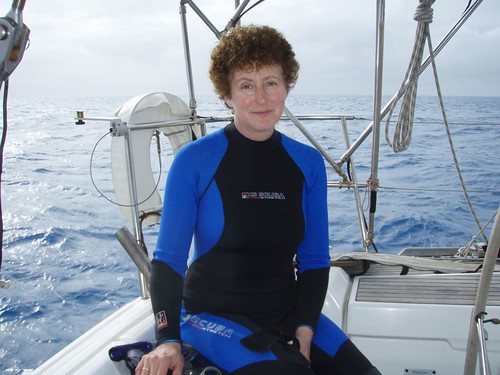
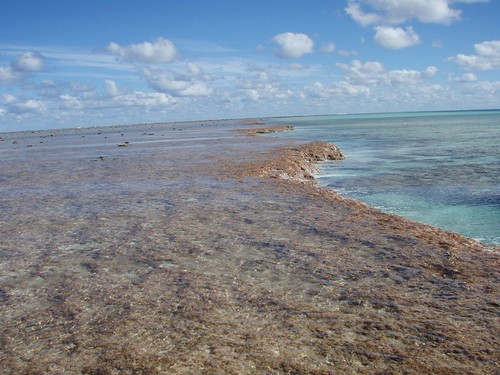
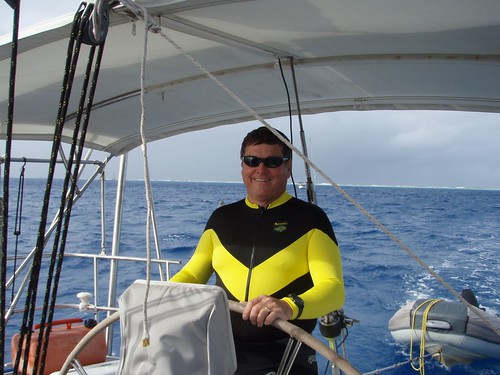
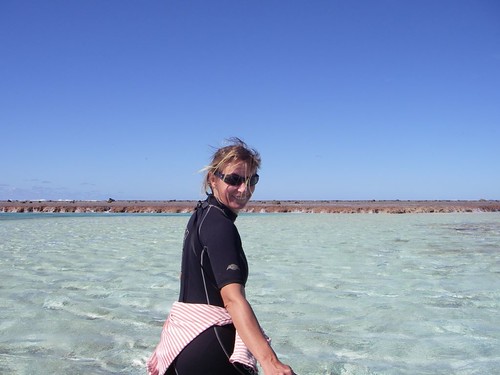
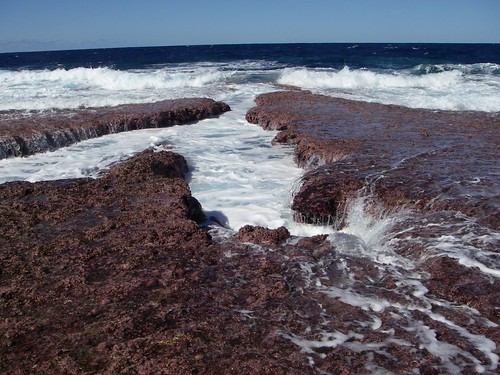
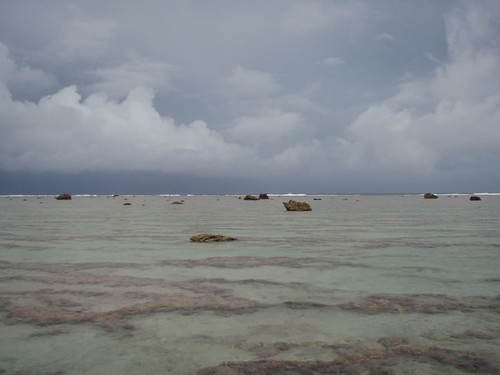







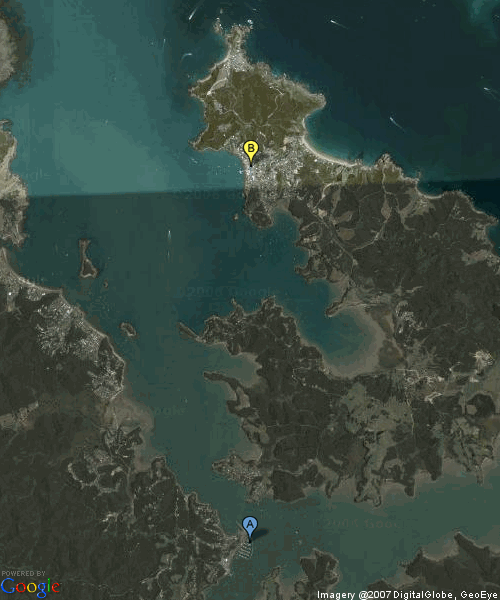



 Norsand Boatyard, Whangarei
Norsand Boatyard, Whangarei







